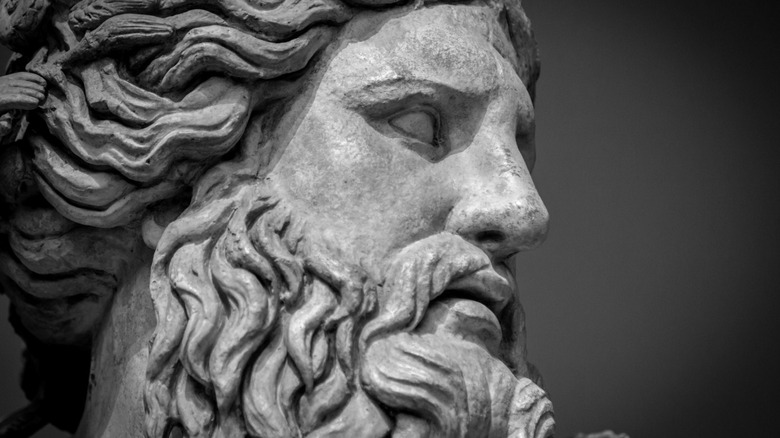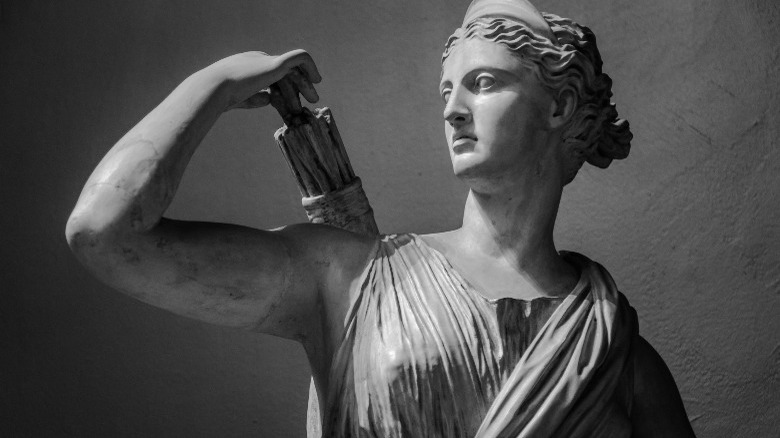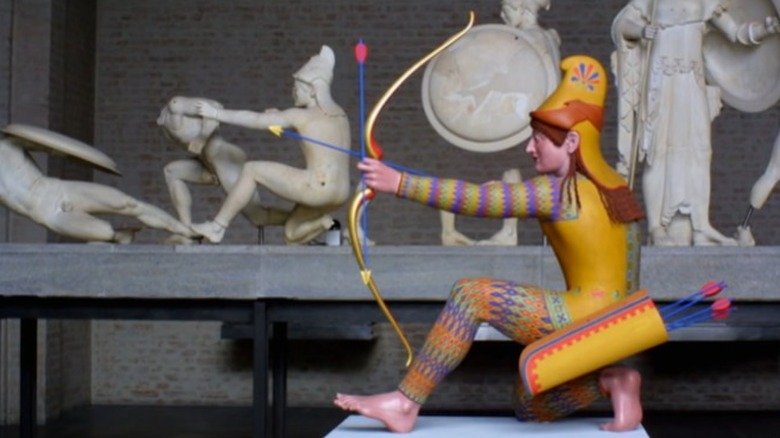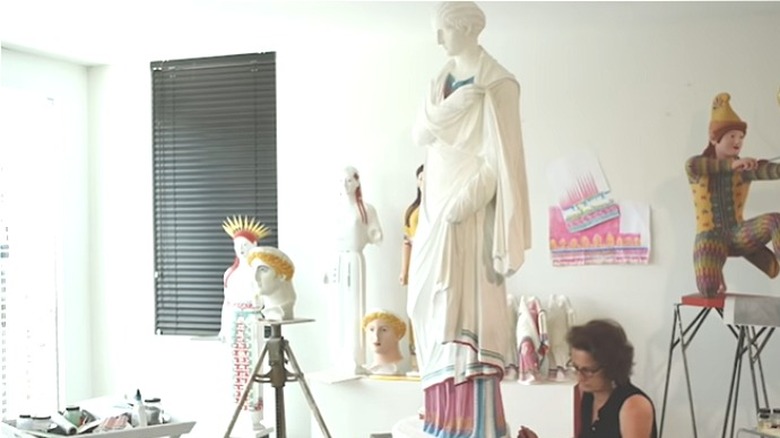Ancient Greece Might Have Been More Colorful Than You Think
If you have ever set foot inside an art museum or seen a picture of a sculpture from Ancient Greece, most of the time there is something that is noticeably absent: color. Many of us are familiar with the pristine white marble that has been carved into figures of everyday people, emperors, or gods and goddesses. Although those are the images we have been shown over the last century or two, it turns out they may not be entirely accurate depictions of this amazing art.
According to The New Yorker, the statues of Ancient Rome and Ancient Greece were oftentimes painted, and not the stark, bare, pale marble that we see in museums today. Generally we may associate painted sculptures with cultures like the Ancient Egyptians, to whom the use of color was highly symbolic and representative of an object's true nature (per Color Meanings). Artists and scholars today are shining a new light on the concept of color in the world of ancient art.
'A Lie We All Hold Dear...'
Mark Abbe, an Associate Professor of Ancient Art at the University of Georgia, believes that the idea that ancient civilizations hated the idea of bright colors is the "most common misconception about Western aesthetics in the history of western art." He also refers to it as "a lie we all hold dear" (per The New Yorker). He's an ancient art expert in the 21st century, but he's certainly not alone in that opinion.
According to Ancient Origins, the idea that classical sculptures could have been painted originated in the 19th century, but it wasn't until 20th century technology arrived that it could really be proven. It was then that ultraviolet light and special cameras were able to provide undeniable evidence that these sculptures had actually been painted. However, the archaeologists of the 15th and 16th centuries were not aware of this fact and assumed the traces of paint found were not indicative of elaborately painted sculptures. Because of this, when the artists of the Renaissance tried to replicate the marble art forms of the classical era, they did so using the white marble they believed their predecessors had used.
Polychromy in Ancient Art
The man who is credited with inventing the light source that first detected signs of color on these Greek and Roman sculptures was Vinzenz Brinkmann. He found proof of what is known as polychromy, and his discovery started to change how others examined art of the classical period. However, like many discoveries, the evidence of the all-over color that he found was actually a bit of an accident.
According to The New Yorker, Brinkmann's specialized lamp was originally designed to find tool marks on Greek marble sculptures. What he found was that there was very little evidence of tool marks, but there was abundant evidence of "all over color" on these statues. This discovery also brought to his attention the lack of study in what he called a "fundamental element of Greek statuary." In the decades since Brinkmann's initial findings, the concept of polychromy in Greek art has become a more popular topic of discussion, as it changes how we view the art and culture of that time.
It wasn't just the art of ancient times that was diverse
It is somewhat of a revelation that classical Greek sculpture was not just pure white marble masterpieces. However, when you think about it, it might actually make more sense that they would be decorated in bright, beautiful colors due to the culture of Ancient Greece itself. Writing at Hyperallergic, Professor Sarah Bond of the University of Iowa addresses this idea and points out that not only was ancient sculpture not all white, the people of the ancient world were not all white either.
Bond points out the example of the Roman empire, which at its largest ran from Scotland to North Africa. Obviously those are vastly different places with different cultures and people, as well as everything in between. Bond also cites ancient sources that discuss how artists during the time did try to convey the color of skin tones and flesh in their art (per The New Yorker). The use of colors to depict various skin colors in art shows the diversity that existed in Egyptian, Roman, and Greek cultures.
The myth of white marble everything
While sparkling white marble has become a symbol of classical Greek art, in modern times it has become evident that this symbolism is likely the result of a mistake. Logic would dictate that sculptures that were created and painted thousands of years ago would not survive in perfect condition for all of that time. Paint would likely fade or chip off as time passes, revealing the original color of the marble. Because of this, as ancient art was being unearthed over the centuries, scholars adopted the idea that the Greeks and the Romans produced their art this way on purpose.
According to The New Yorker, these same scholars argued that the Greeks and Romans left their buildings and sculptures bare to "confirm their rationality and distinguish them from non-Western Art." This attempt to differentiate Western art from the rest of the world resulted in the idea of "form over color," which heavily influenced art during the Renaissance and subsequent time periods. This myth of the use of white marble was perpetuated for centuries, even when there was evidence to the contrary.
Showing the true colors of the ancient world
For the longest time, the concept of color in ancient sculpture had been concealed and looked over. The developments in 20th century technology in combination with scholars researching this topic more thoroughly, polychromy has become more of a discussion point recently. Additionally, it has changed how archaeologists handle excavation, working to preserve as much of the potential color of their discoveries as possible (per The New Yorker).
There has been an increase in exhibits and examples of these ancient sculptures being returned to their original colored glory. Modern reconstructions in exhibits like "Gods in Color" presented the colors of the classical world into museums. Vinzenz Brinkmann and his wife have also produced amazing replicas showing these sculptures in what is believed to be their original forms. There have also been advances in constructing digital models which would allow for changes to be made as more discoveries are made. As research in this area expands, it becomes more and more clear that Ancient Greek sculpture possessed more color and character than initially believed.





